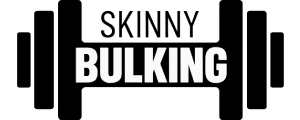
Beginner’s Guide to Bulking and Cutting Basics
For those interested in bodybuilding and fitness, the concepts of bulking and cutting are foundational. Bulking involves consuming a calorie surplus and engaging in heavy weightlifting to build muscle mass, while cutting involves creating a calorie deficit to lose fat while maintaining as much muscle mass as possible. Both phases are crucial for achieving an aesthetically pleasing physique.
During a bulking phase, it’s essential to eat a controlled calorie surplus. This means consuming just above your maintenance calorie needs to promote muscle growth without excessive fat gain. Your diet should include moderate amounts of protein and fat, with a substantial intake of carbohydrates. Carbs are vital for providing the energy needed for heavy lifts and supporting muscle growth. Research suggests that even moderate protein intake, around 1.3-1.8 grams per kilogram of body weight, can be sufficient for bulking. It’s also important to avoid “dirty bulking,” which involves consuming junk food, as this can lead to unnecessary fat gain and health issues.
In addition to diet, your workout routine during bulking should focus on heavy compound lifts like squats and bench presses, complemented by assistance exercises to target specific muscle groups. The goal is to gradually increase strength and muscle mass over time. By emphasizing steady progress and avoiding excessive fat gain, you can achieve a strong foundation for the subsequent cutting phase.
When transitioning to a cutting phase, the primary goal is to create a calorie deficit while maintaining muscle mass. This involves reducing your caloric intake below maintenance levels but not so low that you lose muscle. It’s crucial to avoid quick fixes and instead adopt sustainable lifestyle changes that can be consistently followed. Aiming for gradual weight loss is key, as rapid weight loss often results in muscle loss rather than just fat loss.
To optimize your cutting phase, focus on exercises that increase your heart rate and burn calories efficiently. Incorporating cardio exercises like HIIT (High-Intensity Interval Training) can be highly effective. Additionally, maintaining a higher protein intake during cutting is important to preserve muscle tissue. A good target is about 1.8 grams of protein per kilogram of body weight. Continuing strength training during this phase helps maintain muscle mass, although significant strength gains are less likely due to the calorie deficit.
Another important concept is NEAT (Non-Exercise Activity Thermogenesis), which refers to the energy expended on activities other than sleeping, eating, or exercise. Increasing NEAT by engaging in more daily activities can aid in weight loss. By focusing on these strategies and understanding the importance of both bulking and cutting phases, individuals can more effectively achieve their fitness goals.
For those new to these concepts, it’s essential to understand the benefits and risks associated with bulking and cutting. It’s advisable to consult with a personal trainer or healthcare professional before starting these cycles, especially if you have health concerns. Listening to your body and making gradual changes is crucial for long-term success and safety.
Incorporating bulking and cutting into your fitness routine requires patience and a well-planned approach. By combining these phases with proper nutrition and exercise, individuals can achieve significant improvements in their physical appearance and overall health. Whether you’re aiming to bulk up or cut down, understanding these processes is vital for a successful and sustainable fitness journey.







Leave a Reply